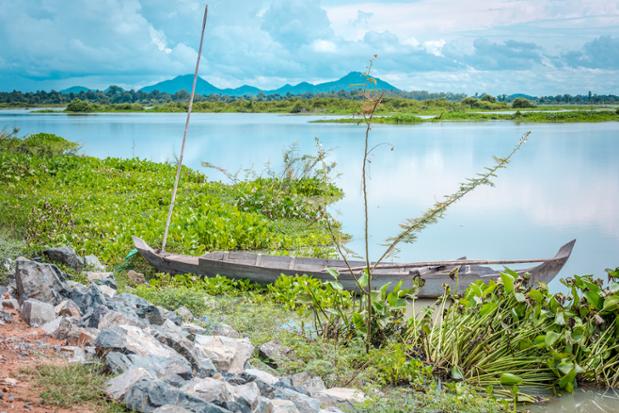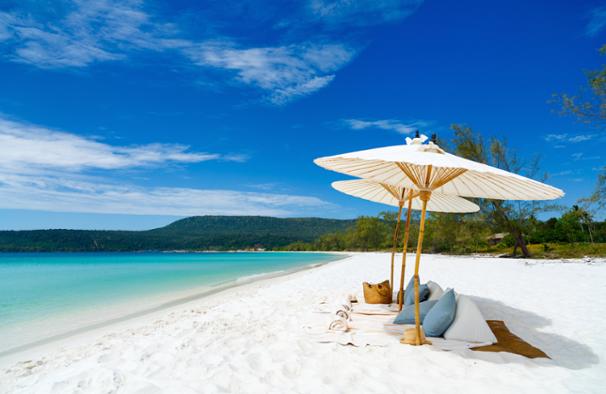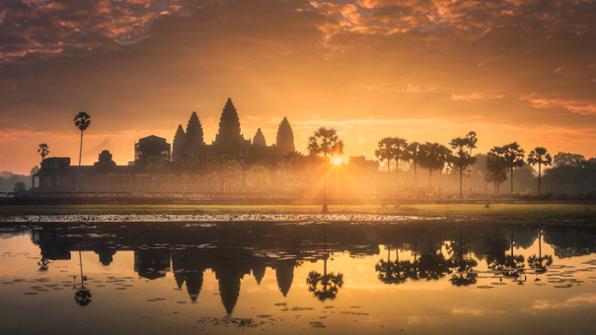
The advantages of traveling in high and low season
Traveling to Cambodia often brings up many questions about when to go. High or low season? Sunshine and heat, or rain and floods? It’s not so simple, but many preconceived ideas can influence your choice. Let’s take a closer look and challenge some snap judgments by highlighting the advantages of visiting during both seasons.
The alternating flow of the Tonlé Sap River in Cambodia governs a necessary and inevitable succession—the seasons. From May to November, during the monsoon, it flows from south to north to fill and expand its namesake lake. From November to May, during the dry season, this natural reservoir feeds its canal, and the current reverses, flowing back to the Mekong River and down to Phnom Penh. This process defines a semiannual change across the Kingdom.
It would be easy to assume that the dry season brings unrelenting sun and six months of stifling heat, while the rainy season means that stepping outside becomes a daily challenge due to constant flooding. That’s not quite true. Any time of year can be a good time to travel in Cambodia.
Rain works wonders!
Leaving the cold of the French winter behind to arrive in the warmth of Southeast Asia is, no doubt, tempting. Escaping France’s sweltering summer for the freshness of Cambodia’s rainy season could also be appealing—if only the imagination didn’t interfere. In popular thinking, the rainy season often evokes deluges, flooding, and swimming your way back to your hotel. Not entirely wrong, but not entirely accurate either.
From May to November, rainfall increases but does not become constant. Typically, showers last an hour or two and occasionally cause flooding, yes—but the country is prepared. It has experienced these cycles since the dawn of time. In rural areas, for instance, raised roads allow for continued travel even when the skies open up. You’ll notice nearly all houses are built on stilts—perfect for watching the rain fall while staying dry and waiting for calm to return.
If your trip is well-prepared and thoughtfully timed, it can become a genuine work of art. Nature and landscapes are beautifully enhanced by this natural watering.

(A little boat ride?)
During the rainy season, the surface area of Tonlé Sap Lake expands from 2,700 to 16,000 square kilometers. For the more adventurous among you, this allows for travel by water between Siem Reap and Battambang. A boat trip can be a great way to enjoy the fresh air and cooling breeze of this vast natural reservoir.
Beyond the surprising and often unexpected experiences the rainy season can offer, there’s another very practical reason to consider traveling between May and November: your budget. You can save up to 20% on flights and accommodation during the monsoon. With fewer tourists during the low season, you’ll enjoy less crowded visits to cultural and heritage sites and likely feel freer as you explore. This also means better availability of the best French-speaking guides and drivers, and a more personalized experience during your tours and activities.
A warm and sunny winter
As mentioned earlier, sunshine and warmth are naturally appealing when Europe is freezing. The mountains aren’t for everyone—many prefer turquoise seas and fine sandy beaches. Cambodia has plenty to offer in that regard, especially during the dry season.
From December to April, the sun lights up Khmer skies. A few short breaks here and there won’t take away from the dazzling beauty of it.

(Beach on Koh Rong Island)
Koh Rong and Koh Rong Samloem, off the coast of Sihanoukville, are prime examples. Their idyllic beaches and untamed jungles are compelling reasons to visit during the dry season. At nightfall, be mesmerized by the glowing dance of bioluminescent plankton as they light up the dark shores with a turquoise shimmer.
Exploring traditions, architecture, and cultural heritage during the dry season also holds undeniable advantages. Accessibility is greatly improved by the weather, making site visits even more enjoyable. For instance, you’ll have the best chance of witnessing the stunning sunrise from the top of Angkor Wat’s central tower.

(Catch the sunrise at 5 a.m. at Angkor Wat)
Though the sun rarely hides for long from Cambodia’s skies during the dry season, temperatures are not excessively hot either. December and January offer cool nights, with temperatures sometimes dropping to around 15°C—just enough to ensure a restful sleep after a full and enriching day.
Thibault Bourru